Mediterranean Swordfish on Fly
By David Lewis
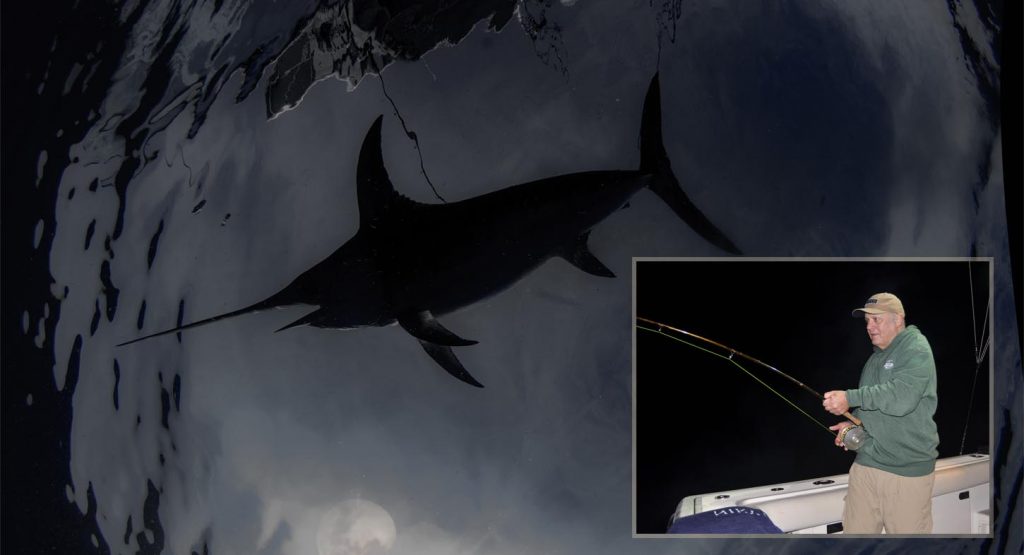
Marina Alcudia was bathed beneath an unbroken blue sky, courtesy of the high-pressure system dominating the Balearic Island of Majorca. It was a stunning day, with temperatures in the comfortable low 70s. At 3 o’clock in the afternoon, the place should have been bustling with tourists enjoying the dockside restaurants and bars. However, aside from the occasional boat owner carrying out routine maintenance, the place was deserted. This was not surprising, as it was the last Thursday of January, mid-winter in the Mediterranean. Aside from a handful of local cafes and eateries, most of Majorca was in hibernation. It would be at least a month or two before the first tourists started to return.

I had no intention of visiting so early in the season, that is until the Monday of that week when I received a phone call from IGFA Capt. Vince Riera: “Dave, drop whatever you are doing and get yourself on a flight out here now,” Riera pleaded down the phone line. My diary was clear, and a few clicks of a mouse confirmed suitable flights were available. A few days later, I arrived at Palma.
This was the opportunity we had been waiting for, for several years. Ever since we first kicked around the idea of trying to catch a swordfish on fly, swords have been plentiful in the rich seas around Majorca. Each season, Riera catches a lot of them. He has tagged as many as six in a single night fishing conventional tackle. The winter months were the most prolific, he explained, notably around the period of a full moon. So each year, we patiently watched and waited for a suitable window of opportunity to present itself. With a full moon and exceptionally calm conditions forecast for at least the next three to four days, this was the opportunity we had been waiting for.
For our first attempt, Riera had selected a deep canyon to the north of the island. A deep fissure in the seabed against which the prevailing currents collided, forcing cold, nutrient-rich water up to the surface. It was a place where he knew that at night, squid ascended the water column to feed, along with the swordfish that, in turn, feed upon them.
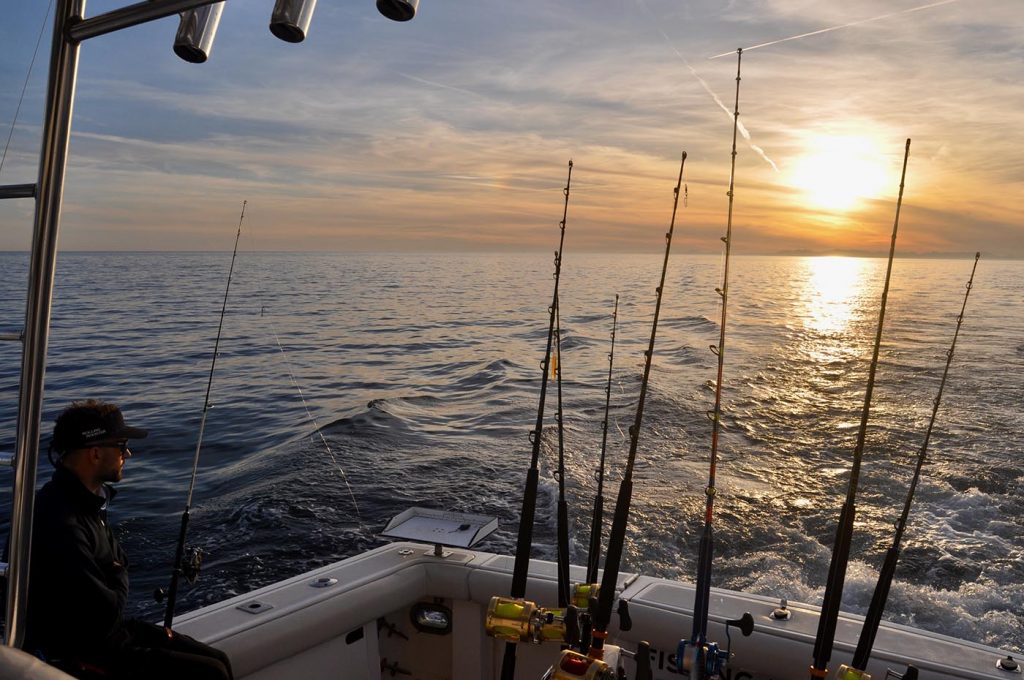
As Mad Max headed towards the tight cluster of waypoints on the chart plotter screen, each marking the exact location of a previous capture, the sun eased its way down towards the horizon. I started to assemble my fly rod, selecting a squid fly that, to my eyes at least, appeared as close to the real thing as you could get without getting covered in ink! Riera and his crew were kept busy preparing the hookless teasers, skipjack tuna bellies rigged inside rubber squid skirts, that hopefully would draw a fish close enough to the transom for me to cast. These were deployed ahead of a chemical light stick which, in addition to an extra level of attraction, would provide me with an accurate indication of the position of the bait and consequently a fish when, or if, I got a chance to cast. One teaser was deployed off a planner working at about 30-45ft beneath the surface, a second skipped through our wake fishing as a flat line.
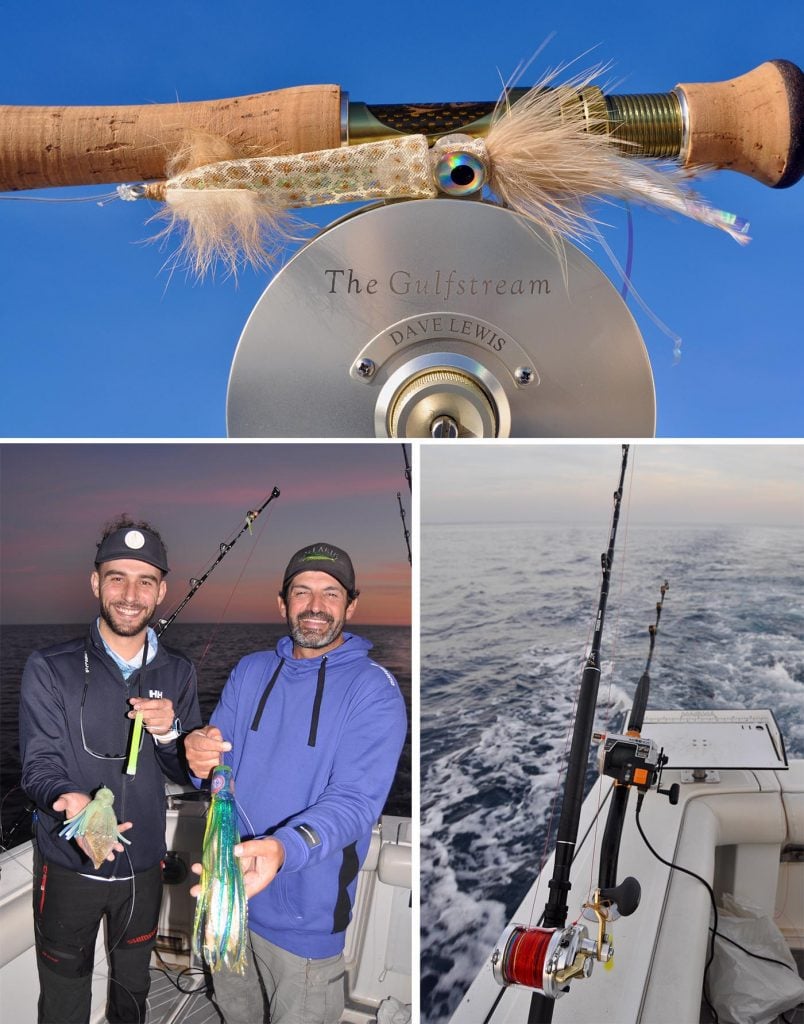
Just as the sun disappeared beneath the horizon, the glowing orb of a full moon ascended into the sky in the east. Earlier I had mentioned to Riera that in East Africa where all my previous nighttime fishing for swordfish has taken place, captains are insistent that the blacker the night the better. Certainly, they would never fish at night during a full moon for swordfish? Riera’s reply made sense. “There are a lot of sharks in that part of the world and moonlight greatly assists them hunting near the surface, hence swords only feed high up in the water column on the blackest of nights. The Mediterranean is almost completely devoid of sharks so swordfish can feed at the surface in safety, even on the brightest of moonlit nights.”
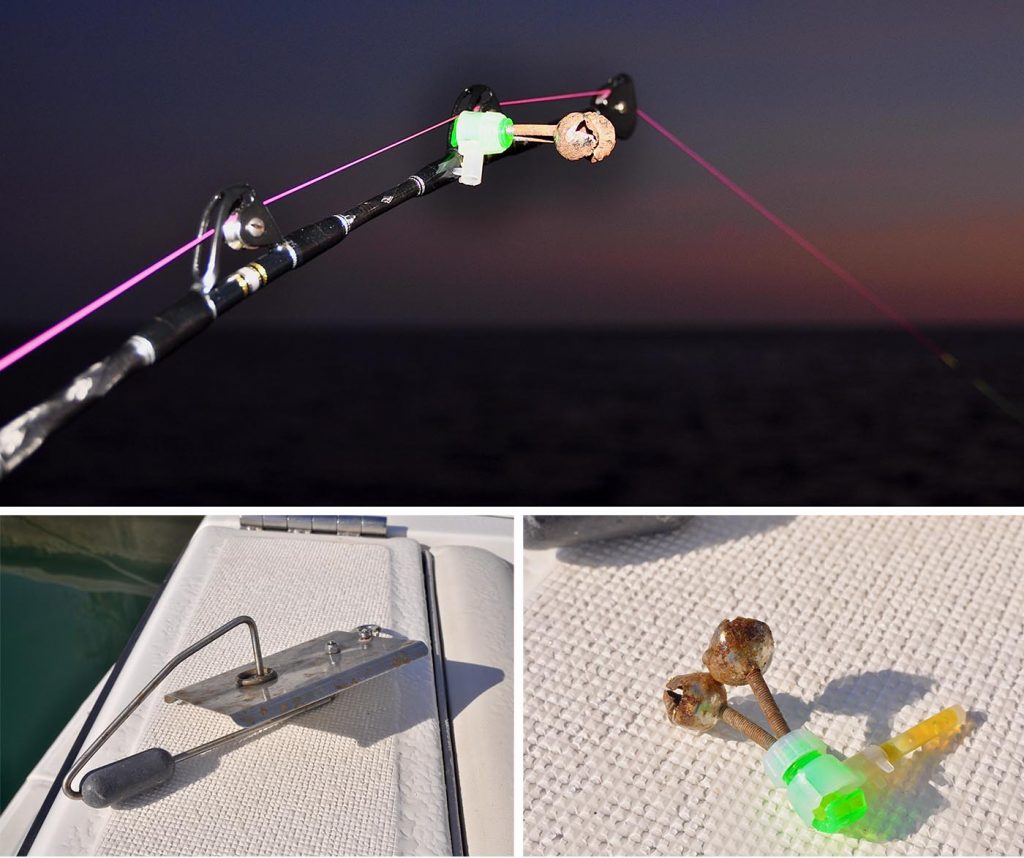
We had our first strike at around seven o’clock. The small bell clipped to the rod tip fishing the planer bait tinkled into life, and a quick glance confirmed something was hitting the bait. Oliver Kaufer, Riera’s crewman, grabbed the rod just as the line broke free from the planer, and shouted out in excitement that he could feel the bait being hit by what appeared to be a swordfish. I positioned myself in the port corner ready to cast, watching as the glow of the light stick confirmed the fish was getting ever closer.
I had assumed that as on previous night trips I would not be able to see anything other than a nightstick, but this was far from the case. The moon had bathed the surface of the ocean in silvery light, which allowed me to clearly see the incredible sight of the fish slashing and tearing at the teaser. Riera put the boat in neutral and as the fish was teased into what I considered to be my casting range; I cast. The fly landed in the right zone a few feet away from the last point the teaser had been, before being pulled free from the water. I allowed it to sink for a second or two giving it a few short tugs, before allowing it to sink further. Nothing happened so I retrieved the fly with long slow pulls, recast, and repeated the drill, full of anticipation of a strike, but again, nothing.

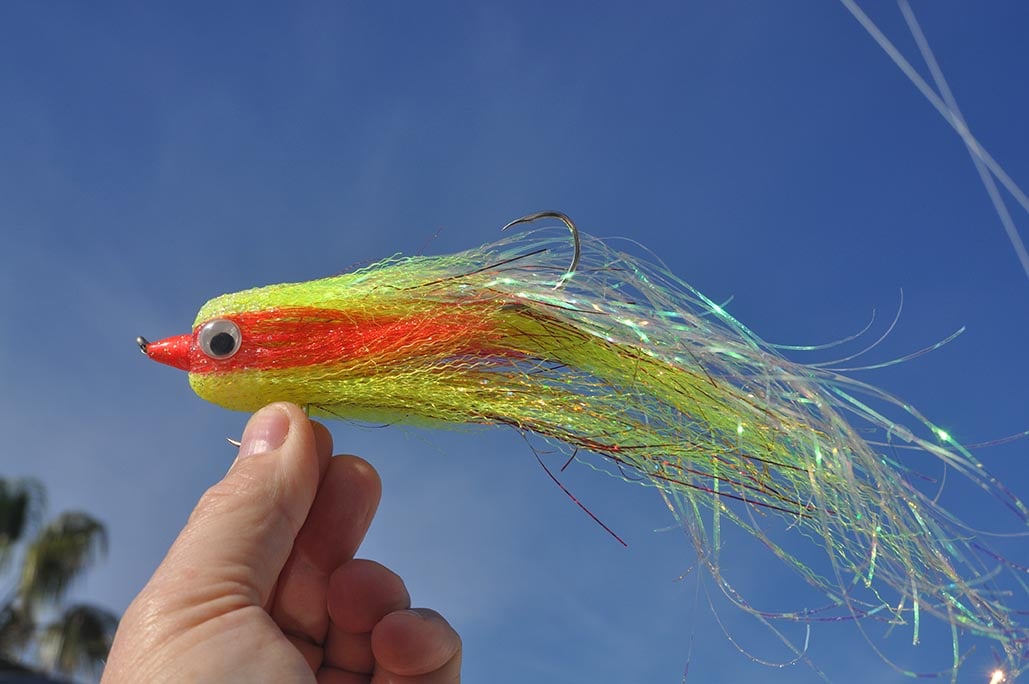
While my fly had been a very realistic imitation of a squid, we determined that perhaps it was on the small side? Certainly, it was tiny when compared to the teaser that the fish had clearly found so much to its liking. A quick rummage in my fly box produced a fly I had picked up many years previously, I believe it was called a Fat Albert. The thinking was that its greater size and bulbous head would create more of a presence in the water. About an hour later I had my chance to test this theory but unlike the first fish, the second sword we raised was not nearly so aggressive, and very quickly faded away. We fished for another couple of hours, but no further fish were raised.

Day two, Friday, January 26, Riera was disappointed with the comparative lack of action the previous night, and he was determined to do something about it. We left the marina a couple of hours earlier, the game plan being to troll our way to an area he was confident would produce a lot more strikes. The journey passed without interruption, then once again as the sun started to set we prepared to fly fish. It was still twilight when the first hookless teasers were deployed, the western skyline alight in a deep orange glow. It had been another cloudless day and soon enough the first stars started to appear, closely followed by the rising moon.
We had been trolling for barely ten minutes when the bell on the planer rod sounded. At first, I don’t think any of us thought it was anything other than a false alarm, but no, seconds later it sounded again as the rod tip rattled violently. Kaufer grabbed the rod and excitedly shouted out that it was indeed a fish, as he started to draw the clearly enraged billfish towards us. I stood by ready to cast, eagerly watching the progress of the light stick, looking for some sign of the fish behind it. Then I saw it, a sizeable broken wake that appeared all the more impressive given the ultra-calm surface of the sea, which glowed in the remaining ambient light.
Clearly, this was another very aggressive fish, but would it switch from teaser to fly? Kaufer pulled the teaser free of the water, Riera put the engines into neutral, I cast. The fly landed exactly where I had intended, about six feet to the right of where the wake from the fish was still clearly visible, and I watched in awe as that wake immediately altered course and swam directly towards the fly. Seconds later I felt a hard knock on the end of my line, and in my mind’s eye, I saw the fish strike the fly with its bill. I allowed the fly to continue to sink giving it just the slightest of tugs to try and retain the fish’s interest, then everything locked up solid.
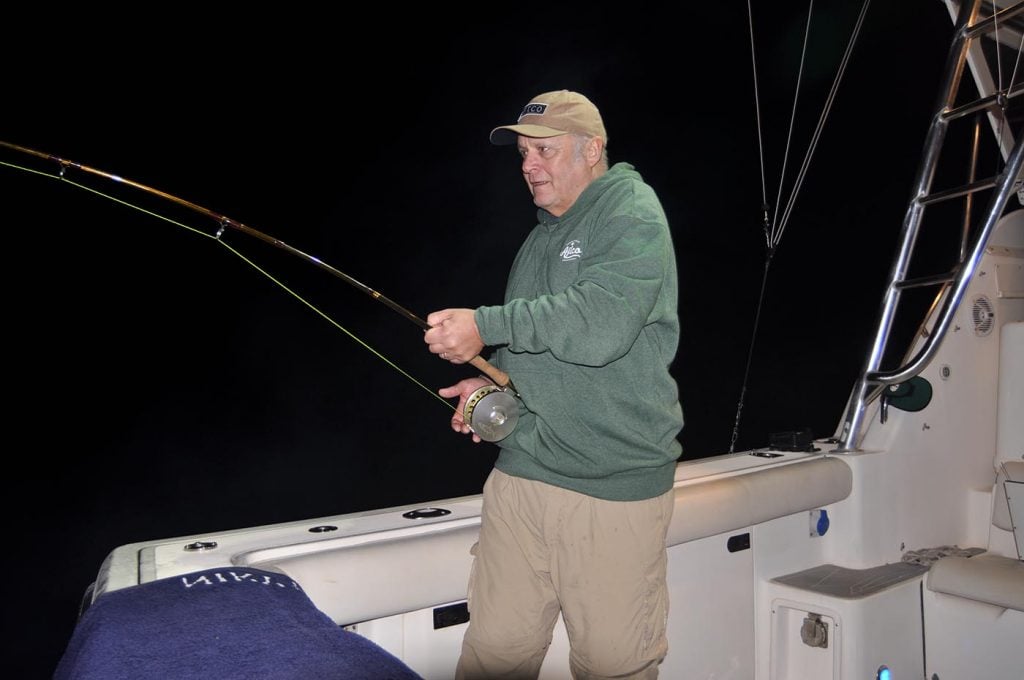
And so began the most stressful hour I have ever endured with a fishing rod in my life! I set the hook firmly with two or three tugs, and a moment later my fish was in the air barely twenty feet behind us. The image of that magnificent animal silhouetted against the still comparatively light western sky, looking for all the world like a reversed fish arch on a sonar screen, its sabre-like bill all but the length of its chunky body, is indelibly etched into my memory.
Following the jump, the fish set off on its first run, slowly at first, but gradually increasing in speed until my reel was screaming. Eventually, the run started to ease, then once again the fish started stripping line at high at speed, as it ripped ever more backing from the spool. At this stage, there was nothing I could do other than hold on while trying to maintain as much smooth pressure on the fish as I could, terrified that the hook would fall out or the bill cut the flimsy tippet. Eventually, the angle of my line confirmed the fish was diving deep, so I settled in a position at the open transom door where I could maintain maximum pressure on the fish using the lower third of the rod. But for what seemed like a lifetime, there was nothing I could do, other than watch as even more backing disappeared out through the rod rings.
Eventually, the fish did stop, and I started retrieving line as and when I could, inch by inch, foot by foot. Riera informed me that he could see my fish on the sonar 300 feet beneath us, confirming this was not going to be a quick fight. For maybe forty minutes I went through a process during which I’d recover maybe 30 feet of line, only to have to relinquish it again when the fish bored back into deeper water. Finally, I could feel that I had started to gain something of an upper hand, and slowly but ever so surely I was able to start pulling my fish towards the surface.
After about an hour I had the fly line back on the reel, and from that moment, things went quickly. By this stage the fish was coming comparatively easily and I thought it was going to jump but no, when finally the fish broke the surface it just swam very slowly, its high dorsal cutting the surface film. Minutes later Kaufer with a gloved hand reached down and grabbed its bill.
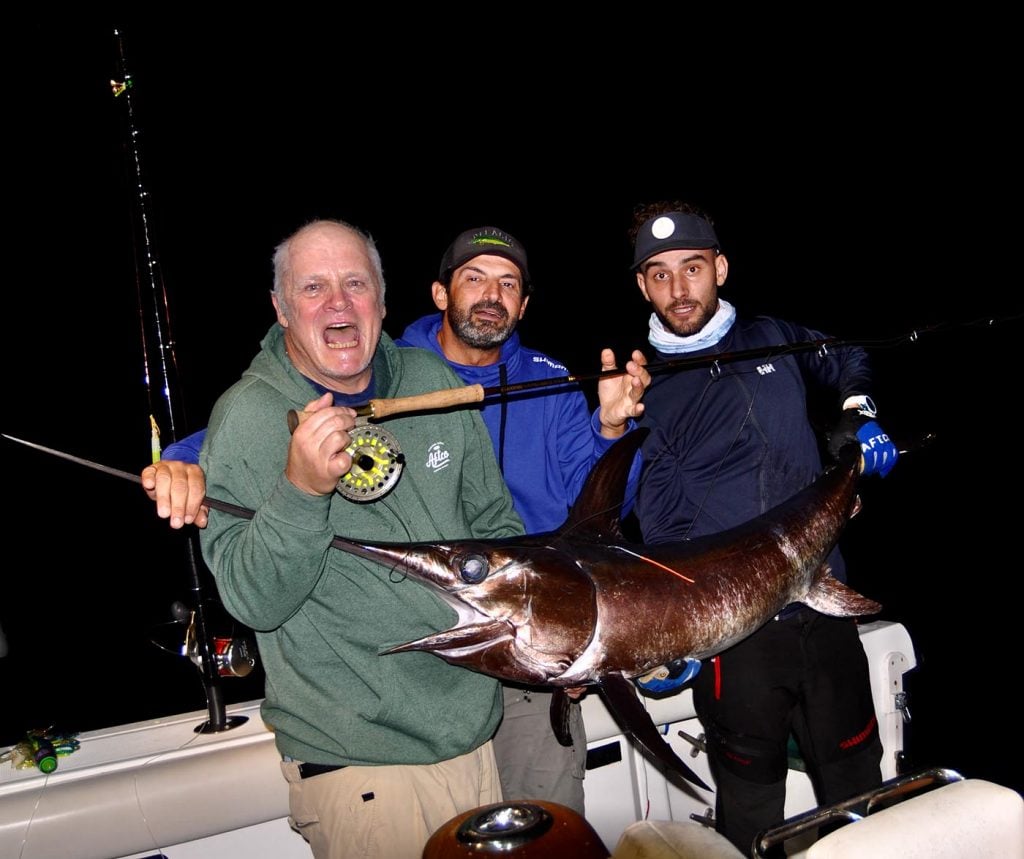
The fish was tagged and released, as is the law with all billfish caught in Spanish waters. Just how heavy that fish was we’ll never really know, but everyone onboard agreed it weighed in the region of 50-60 pounds. Certainly, as we posed for a couple of quick trophy shots it felt every ounce of that!
To the best of our and IGFA’s knowledge, the catch was the first swordfish caught in the Mediterranean with IGFA compliant fly fishing tackle.
To contact Capt. Vince Riera Telephone numbers are: +34 667 93 09 02 and +34 675 44 73 05, email: [email protected] web: www.fishing-mallorca.net
Catching a Sword for the IGFA Billfish Royal Slam on Fly
Completing the IGFA Billfish Royal Slam on fly is an exceptionally challenging feat due to the difficulty of catching a swordfish on fly tackle. In most cases it requires meticulous planning, precise timing, and a considerable amount of work. Only a few swordfish have been caught on IGFA compliant fly tackle, mostly by anglers off Kenya's coast in East Africa and South Florida in the Gulf Stream. In the annals of the IGFA, only four people in history have achieved this remarkable accomplishment to be added to the ranks of the IGFA Billfish Royal Slam on fly: Dr. Martin Arostegui, Jeremy Block, IGFA Chairman Roy Cronacher, Jr., and Fouad Sahiaoui.

One remarkable example is Jeremy Block, who was the first to achieve this feat on March 24, 2001, when he landed a 16-kilogram (35-pound 4-ounce) swordfish on the fly, 24 miles off the coast of Watamu, Kenya, fishing out of Hemingway’s Resort. His catch also earned him the IGFA Men’s 6-kg (12-lb) Tippet Class World Record and helped him to complete his IGFA Billfish Royal Slam on fly.
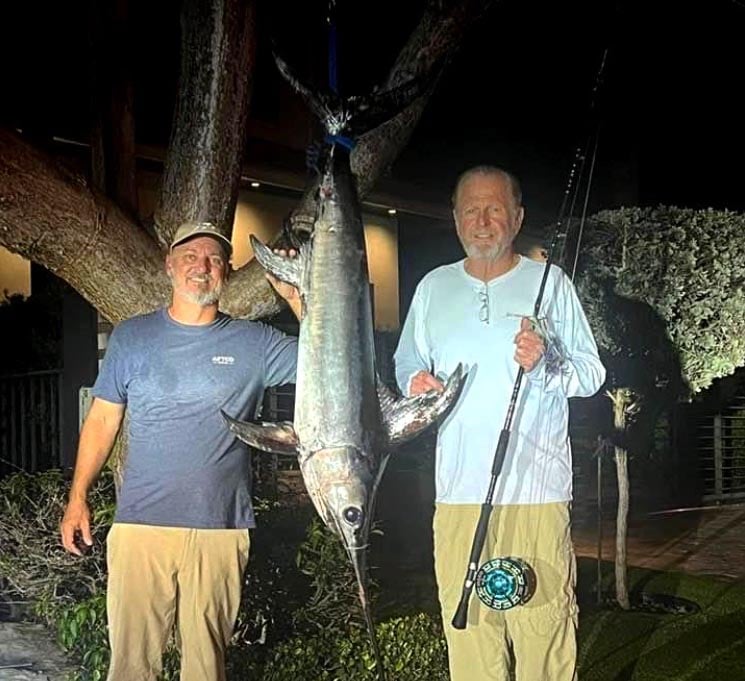
Adding to this elite group is IGFA Chairman Roy Cronacher, who has earned five Billfish Royal Slams on fly and who recently landed a 26.93-kilogram (59-pound, 6-ounce) swordfish on fly on Saturday, March 9, 2024. The catch potentially sets the IGFA Men’s 10-kg (20 lb) Tippet Class World Record for the species, allowing him to work towards possibly completing his sixth Billfish Royal Slam on fly. Roy was fishing off South Florida aboard his boat Gladiator, captained by Tim Richardson and with mate Eric Leech, when the swordfish was enticed by his fly. After a grueling battle through the dark of the night, the crew of the Gladiator successfully boated the swordfish and returned to the docks for an official weight on their certified scale. This record is currently pending and under review.
